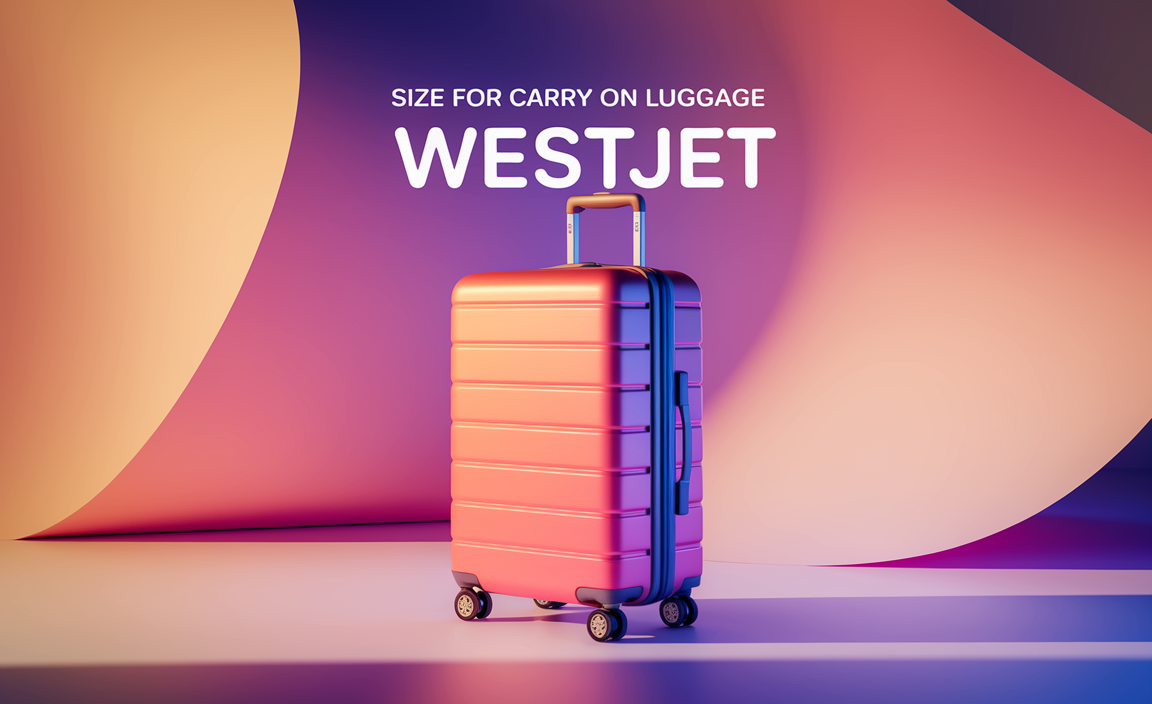Discover your perfect Bergen no-crowds itinerary with our guide to essential, affordable experiences. Explore the charm of this Norwegian gem without the hustle, focusing on local flavor and hidden gems. This plan balances iconic sights with peaceful exploration, ensuring a relaxed and budget-friendly adventure.
Bergen, Norway, is a city of enchanting fjords, colorful wooden houses, and rich history. Many travelers dream of visiting, but the thought of jostling through crowded tourist spots can be a bit daunting. What if you could experience Bergen’s magic without the throngs of people, all while keeping your budget in check? It may sound like a challenge, but with a little planning, you can create an unforgettable Bergen no-crowds itinerary that’s both enriching and affordable.
This isn’t about avoiding Bergen’s charm; it’s about experiencing it thoughtfully. We’ll guide you through smart timing, lesser-known viewpoints, and free activities that capture the true spirit of this harbor city. Get ready for a journey that’s as peaceful as it is picturesque, tailored for explorers who value both authenticity and savings. Let’s dive into how you can make Bergen your own, one quiet corner at a time.
Why a No-Crowds Bergen Itinerary Matters
Bergen is undeniably popular, especially during peak tourist seasons like summer. Millions flock to its famous attractions, but this popularity can sometimes overshadow the city’s introspective beauty. Experiencing Bergen with fewer people allows for more authentic interactions, deeper appreciation of its landscapes, and a more relaxed pace. It’s about savoring the moment, not just ticking off a list.
Imagine strolling through the historic Bryggen wharf, hearing the gentle lapping of water against the old buildings, rather than the echo of a thousand footsteps. Or consider finding a quiet spot to enjoy a locally baked pastry, watching the world go by without feeling rushed. A no-crowds itinerary also often means more affordable options, as off-peak times and less popular spots tend to have better prices.
This guide is designed to help you find that balance. We’ll focus on strategies and locations that offer a more serene and budget-conscious experience of Bergen. Get ready to discover a side of Bergen that many visitors miss.
Understanding Bergen’s Peak vs. Off-Peak Times
Timing is everything when it comes to avoiding crowds. Bergen, like many popular European cities, experiences its busiest periods during the warmer months and major holidays.
Peak Season: Late May through August. This is when the weather is warmest, days are longest, and cruise ships bring large groups. Attractions like the Fløibanen funicular and the Hanseatic Museum can be very crowded.
Shoulder Seasons: April, September, and early October. These months offer a good balance. The weather is still generally pleasant, crowds are thinner, and prices for accommodation and flights might be slightly lower.
Off-Peak Season: November through March. This is Bergen’s quietest period. Expect colder weather, shorter daylight hours, and the possibility of rain or snow. However, you’ll find Bergen at its most tranquil, with significantly fewer tourists. This is the prime time for a true no-crowds experience.
Choosing to visit during the shoulder or off-peak seasons is the first, and perhaps most significant, step towards your no-crowds Bergen adventure.
Your Essential & Affordable Bergen No-Crowds Itinerary
This itinerary is crafted for a 3-day trip, focusing on experiencing Bergen’s essence without breaking the bank or battling crowds. It assumes you’re aiming for a visit during the shoulder or off-peak seasons.
Day 1: Historic Charm & Coastal Breezes
Start your day early to make the most of the quieter morning hours.
Morning (9:00 AM – 12:00 PM): Bryggen Hanseatic Wharf Exploration
While Bryggen is famous, visiting before 10 AM or after 4 PM can significantly reduce crowds. Evenings offer a magical, illuminated experience.
Wander through the narrow alleyways between the colorful wooden buildings. These UNESCO World Heritage sites tell stories of Bergen’s trading past.
Visit the Bryggens Museum (€15-€25 entrance fee, check current prices) to understand the history. For an affordable alternative, simply explore the exteriors and soak in the atmosphere.
Affordable Tip: Instead of buying souvenirs in the main shops, explore the small artisan studios tucked away in the alleys for unique, handcrafted items.
Lunch (12:00 PM – 1:30 PM): Fisketorget (Fish Market) – Local Style
Fisketorget can be bustling, but it’s a must-see. For a less crowded and more affordable experience, sample from the stalls offering prepared seafood snacks rather than a full sit-down meal.
Try a traditional fish cake (fiskekake) or a small portion of shrimp.
Affordable Tip: Many stalls offer excellent open-faced sandwiches (smørbrød). Grab one and find a bench by the harbor to enjoy the view. This is far more budget-friendly than a restaurant.
Afternoon (1:30 PM – 4:30 PM): Fløyen Mountain – The Scenic, Quieter Approach
The Fløibanen funicular is popular. To avoid queues and save money, consider hiking up or taking a bus to a less busy starting point.
The hike from the city center to the top of Fløyen takes about 45-60 minutes and offers stunning, evolving views. It’s a fantastic workout and completely free.
If hiking isn’t for you, consider taking a bus (e.g., line 12) towards Fjellendal, which offers alternative trail access points that are less frequented than the main funicular station.
Once at the top, explore the walking trails. The Tverrgåhldnuten viewpoint offers panoramic city views without the main viewing platform crowds.
Affordable Tip: Pack your own snacks and water to enjoy at the top. The views are free, and the self-catering is a great saving.
Evening (5:00 PM onwards): Nordnes Peninsula & Local Dinner
Take a leisurely stroll around the Nordnes peninsula. This residential area offers charming streets, sea views, and a sense of local life.
Visit the Nordnes Park, known for its beautiful gardens and the historical Apollon statue. It’s a peaceful escape.
For dinner, skip the tourist traps near Bryggen. Explore areas like Nordnes or Sandviken for more authentic and affordable “husmannskost” (traditional Norwegian home cooking) restaurants. Look for places filled with locals.
Affordable Tip: Many local pubs and smaller eateries offer daily specials (dagens rett) that are usually very reasonably priced and delicious.
Day 2: Art, Culture & Unseen Corners
Today focuses on immersing yourself in Bergen’s cultural offerings and exploring areas away from the main tourist circuit.
Morning (10:00 AM – 1:00 PM): KODE Art Museums – A Different Perspective
Bergen’s KODE museums are a complex of four buildings housing an impressive collection of art and design. While the Munch exhibition in KODE 3 is popular, the other buildings offer a more tranquil experience.
Consider visiting KODE 1 (Rasmus Meyer Collection) for Norwegian art from the “Golden Age,” or KODE 4 for contemporary art and design.
Affordable Tip: Look for combined tickets if you plan to visit multiple KODE buildings. Check their website for free admission days or times, which can occasionally occur. Sometimes, the smaller exhibitions are less crowded.
Lunch (1:00 PM – 2:30 PM): Cafe Culture in Lille Lungegårdsvannet Area
Instead of the busy Fisketorget again, explore the cafes around Lille Lungegårdsvannet lake.
Many offer affordable lunch options like soups, salads, and sandwiches with pleasant views of the water and city.
Affordable Tip: A simple open-faced sandwich or a hearty soup from a local cafe is a classic and cost-effective Norwegian lunch.
Afternoon (2:30 PM – 5:30 PM): Exploring the Charming Streets of Nordnes & Verftet
Dedicate more time to the Nordnes area. Wander down charming, winding streets like Klostergaten and walk along the waterfront.
Discover the abandoned shipyard area known as Verftet, which is often overlooked. It’s a place with industrial history and edgy urban art, offering a different vibe. It’s a great spot for photography.
External Link: For an idea of urban art and regeneration, explore projects like those documented by the Urban Art Collective to understand the context of areas like Verftet.
Evening (6:00 PM onwards): Local Microbrewery or Cozy Pub Experience
Bergen has a growing craft beer scene. Seek out local microbreweries like Beerbliotek or Vinstra for a relaxed atmosphere to sample Norwegian brews. These are often more laid-back than traditional bars.
Alternatively, find a cozy pub in a less touristy neighborhood like Sandviken. These offer a chance to mingle with locals and enjoy a simple meal.
Affordable Tip: Look for happy hour deals or try a flight of beers to sample more without committing to full pints.
Day 3: Fjords, Views & Farewell Flavors
Your final day can be about experiencing the natural beauty surrounding Bergen, with budget-friendly alternatives to expensive tours.
Morning (9:00 AM – 12:00 PM): The Fjord Experience – Local Style
Instead of expensive fjord cruises from Bergen, consider using local public transport for a taste of the fjords.
Take a public bus (e.g., Norled ferry services from Strandkaiterminalen) towards nearby islands or smaller fjord villages like Mostraumen. While not a deep fjord cruise, it offers stunning coastal scenery and a fraction of the cost. Check Skyss for local transport and ferry schedules.
Affordable Tip: Pack a picnic lunch to enjoy on the ferry or at your destination. The journey itself is the experience, and you control your spending.
Lunch (12:30 PM – 1:30 PM): Picnic with a View
If you took a ferry, find a scenic spot at your destination or on the return journey for your picnic.
If you stayed in Bergen, head back to Nordnes Park or find a bench along the harbor to enjoy your packed lunch.
Afternoon (2:00 PM – 4:00 PM): The Bergen Maritime Museum & Harbour Walk
For a dose of maritime history that’s often less crowded than other museums, visit the Bergen Maritime Museum. It’s fascinating for understanding Bergen’s seafaring past.
Afterwards, take a long walk along the harbor, exploring the older piers and boatyards. You’ll see working vessels and get a feel for the city’s connection to the sea.
Affordable Tip: The outdoor harbor exploration is entirely free and provides a genuine feel for Bergen’s maritime heart.
Late Afternoon/Farewell (4:00 PM onwards): A Cozy Café Farewell
Find a comfortable café in a neighborhood like Markens or Skostredet (known for its independent shops).
Enjoy a final Norwegian treat like a ‘skillingsbolle’ (cinnamon bun) with coffee. These small, local cafes offer a more authentic and affordable farewell than large chain restaurants.
Affordable Tip: Treat yourself to one local pastry and coffee – it’s a simple indulgence that’s easy on the wallet.
Budgeting Tips for Your Bergen Trip
Here’s how to keep your Bergen adventure affordable:
Accommodation: Opt for guesthouses, hostels, or apartments outside the immediate city center. Look for Airbnbs in neighborhoods like Sandviken or Laksevåg. Booking in advance, especially for shoulder seasons, can secure better rates.
Food: Embrace picnics, supermarket snacks, and daily specials at local eateries. Avoid restaurants with prime tourist locations.
Transportation: Bergen is very walkable. For longer distances, utilize buses and ferries with the local transport company (Skyss). Consider a Bergen Card only if you plan to visit many paid attractions within a short time. For a no-crowds, budget trip, it might not be cost-effective.
Activities: Prioritize free activities like walking, hiking, exploring parks, and enjoying the cityscape. Limit paid attractions to your absolute must-sees.
Sample Cost Breakdown (Per Person, Per Day – Estimate)
This is a rough guide for budget travel during shoulder or off-peak seasons.
| Category | Estimated Cost (NOK) | Notes |
| :————— | :——————- | :——————————————– |
| Accommodation | 500 – 900 | Hostel/budget guesthouse/shared Airbnb |
| Food & Drink | 300 – 500 | Picnics, market snacks, one affordable meal |
| Local Transport | 100 – 200 | Occasional bus/ferry or walking |
| Activities | 50 – 150 | One modest museum entry or coffee/pastry |
| Total Daily | 950 – 1750 NOK | (~€90 – €165 / ~$100 – $185 USD) |
Note: Exchange rates fluctuate. This is a conservative estimate and does not include flights or major shopping.
Practical Packing Essentials for Comfort & Convenience
Even on a budget, comfort is key to enjoying your travels. Here’s what Michael C. Herrera recommends for a stress-free trip, especially if you’re managing personal care needs:
Layers are Key: Bergen’s weather is notoriously unpredictable. Pack moisture-wicking base layers, insulating mid-layers (fleece or wool), and a waterproof and windproof outer shell.
Comfortable Walking Shoes: You’ll be doing a lot of walking, often on cobblestone streets. Waterproof, broken-in walking shoes or hiking boots are essential.
Compact Umbrella & Rain Gear: Don’t leave home without it! A small, sturdy travel umbrella is a lifesaver.
Reusable Water Bottle: Stay hydrated and save money by refilling from taps and fountains.
Backpack/Day Bag: For carrying essentials, snacks, and purchases. Consider a small, anti-theft backpack for added security.
Personal Care Items:
For Adults & Children: If you require adult diapers or child diapers for long journeys, comfort, or peace of mind, opt for discreet, highly absorbent varieties designed for active use. Brands that offer breathable materials and secure fits can make a significant difference in comfort, especially during travel. Pack more than you think you’ll need to avoid any stress. Websites like NorthShore Care Supply offer a wide range of products and educational resources for selecting the best options for various needs.
Travel-sized Toiletries: Pack only what you need to save space and avoid unnecessary purchases.
Portable Charger: Essential for keeping your phone and other devices powered up, especially if you’re using them for navigation or photos.
Snacks: Especially if you plan to hike or take longer transport journeys. Nuts, dried fruit, and energy bars are great options.
Alternative Bergen Experiences for Quiet Enjoyment
If the main sights still feel a bit overwhelming, or you’re looking for even more unique, quiet experiences:
The Bergen Library (Biblioteket): A beautiful, modern building offering a peaceful interior with lovely views. A great place to relax, read, or escape the weather.
Kvarfjellet (Hill): While Fløyen is popular, Kvarfjellet, accessible via bus and a shorter hike, offers quieter parkland and viewpoints.
Sandviken Neighborhood: Explore this charming, historic district north of Bryggen. It has beautiful wooden houses, narrow streets, and a more local feel.
Public Art Walks: Many Norwegian cities have excellent public art. Bergen is no exception. Research walking routes that highlight sculptures and murals for a free, self-guided tour.
Frequently Asked Questions
What is the absolute best time to visit Bergen to avoid crowds?
The absolute best time to visit Bergen to avoid crowds is during the off-peak season, which typically runs from November through March. You’ll experience the city at its most tranquil. For a compromise between fewer crowds and more pleasant weather, the shoulder seasons of April, September, and early October are also excellent choices.
Are there affordable ways to see the fjords near Bergen without a big tour?
Yes! Instead of expensive dedicated fjord cruises, utilize Bergen’s local public transport. Take a public ferry (like those offered by Skyss) to nearby islands or smaller fjord villages. This offers scenic water travel and fjord views at a fraction of the cost. Pack your own food to save even more.
Is Bergen a walkable city, or will I need extensive public transport?
Bergen is a very walkable city, especially its central historic areas like Bryggen and the harbor. Many key attractions are within a reasonable walking distance of each other. For longer distances or to reach specific neighborhoods like Sandviken or Nordnes, buses and local ferries are readily available and affordable.
<h3 id="faq-4







